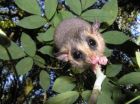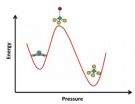(Press-News.org) In response to an ongoing, unprecedented outbreak of Ebola virus disease (EVD) in West Africa, a team of researchers from the Broad Institute and Harvard University, in collaboration with the Sierra Leone Ministry of Health and Sanitation and researchers across institutions and continents, has rapidly sequenced and analyzed more than 99 Ebola virus genomes. Their findings could have important implications for rapid field diagnostic tests. The team reports its results online in the journal Science.
For the current study, researchers sequenced 99 Ebola virus genomes collected from 78 patients diagnosed with Ebola in Sierra Leone during the first 24 days of the outbreak (a portion of the patients contributed samples more than once, allowing researchers a clearer view into how the virus can change in a single individual over the course of infection). The team found more than 300 genetic changes that make the 2014 Ebola virus genomes distinct from the viral genomes tied to previous Ebola outbreaks. They also found sequence variations indicating that, from the samples sequenced, the EVD outbreak started from a single introduction into humans, subsequently spreading from person to person over many months.
The variations they identified were frequently in regions of the genome encoding proteins. Some of the genetic variation detected in these studies may affect the primers (starting points for DNA synthesis) used in PCR-based diagnostic tests, emphasizing the importance of genomic surveillance and the need for vigilance.
To accelerate response efforts, the research team released the full-length sequences on National Center for Biotechnology Information's (NCBI's) DNA sequence database in advance of publication, making these data available to the global scientific community.
"By making the data immediately available to the community, we hope to accelerate response efforts," said co-senior author Pardis Sabeti, a senior associate member at the Broad Institute and an associate professor at Harvard University. "Upon releasing our first batch of Ebola sequences in June, some of the world's leading epidemic specialists contacted us, and many of them are now also actively working on the data. We were honored and encouraged. A spirit of international and multidisciplinary collaboration is needed to quickly shed light on the ongoing outbreak."
The 2014 Zaire ebolavirus (EBOV) outbreak is unprecedented both in its size and in its emergence in multiple populated areas. Previous outbreaks had been localized mostly to sparsely populated regions of Middle Africa, with the largest outbreak in 1976 reporting 318 cases. The 2014 outbreak has manifested in the more densely-populated West Africa, and since it was first reported in Guinea in March 2014, 2,240 cases have been reported with 1,229 deaths (as of August 19).
Augustine Goba, Director of the Lassa Laboratory at the Kenema Government Hospital and a co-first author of the paper, identified the first Ebola virus disease case in Sierra Leone using PCR-based diagnostics.
"We established surveillance for Ebola well ahead of the disease's spread into Sierra Leone and began retrospective screening for the disease on samples as far back as January of this year," said Goba. "This was possible because of our long-standing work to diagnose and study another deadly disease, Lassa fever. We could thus identify cases and trace the Ebola virus spread as soon as it entered our country."
The research team increased the amount of genomic data available on the Ebola virus by four fold and used the technique of "deep sequencing" on all available samples. Deep sequencing is sequencing done enough times to generate high confidence in the results. In this study, researchers sequenced at a depth of 2,000 times on average for each Ebola genome to get an extremely close-up view of the virus genomes from 78 patients. This high-resolution view allowed the team to detect multiple mutations that alter protein sequences -- potential targets for future diagnostics, vaccines, and therapies.
The Ebola strains responsible for the current outbreak likely have a common ancestor, dating back to the very first recorded outbreak in 1976. The researchers also traced the transmission path and evolutionary relationships of the samples, revealing that the lineage responsible for the current outbreak diverged from the Middle African version of the virus within the last ten years and spread from Guinea to Sierra Leone by 12 people who had attended the same funeral.
The team's catalog of 395 mutations (over 340 that distinguish the current outbreak from previous ones, and over 50 within the West African outbreak) may serve as a starting point for other research groups.
"We've uncovered more than 300 genetic clues about what sets this outbreak apart from previous outbreaks," said Stephen Gire, a research scientist in the Sabeti lab at the Broad Institute and Harvard. "Although we don't know whether these differences are related to the severity of the current outbreak, by sharing these data with the research community, we hope to speed up our understanding of this epidemic and support global efforts to contain it."
"There is an extraordinary battle still ahead, and we have lost many friends and colleagues already like our good friend and colleague Dr. Humarr Khan, a co-senior author here," said Sabeti. "By providing this data to the research community immediately and demonstrating that transparency and partnership is one way we hope to honor Humarr's legacy. We are all in this fight together."
INFORMATION:
This work was supported by Common Fund and National Institute of Allergy and Infectious Diseases in the National Institutes of Health, Department of Health and Human Services, as well as by the National Science Foundation, the European Union Seventh Framework Programme, the World Bank, and the Natural Environment Research Council.
Other researchers who contributed to this work include Augustine Goba, Kristian G. Andersen, Rachel S. G. Sealfon, Daniel J. Park, Lansana Kanneh, Simbirie Jalloh, Mambu Momoh, Mohamed Fullah, Gytis Dudas, Shirlee Wohl, Lina M. Moses, Nathan L. Yozwiak, Sarah
Winnicki, Christian B. Matranga, Christine M. Malboeuf, James Qu, Adrianne D. Gladden,
Stephen F. Schaffner, Xiao Yang, Pan-Pan Jiang, Mahan Nekoui, Andres Colubri, Moinya Ruth Coomber, Mbalu Fonnie, Alex Moigboi, Michael Gbakie, Fatima K. Kamara, Veronica Tucker, Edwin Konuwa, Sidiki Saffa, Josephine Sellu, Abdul Azziz Jalloh, Alice Kovoma, James Koninga, Ibrahim Mustapha, Kandeh Kargbo, Momoh Foday, Mohamed Yillah, Franklyn Kanneh, Willie Robert, James L. B. Massally, Sinéad B. Chapman, James Bochicchio, Cheryl Murphy, Chad Nusbaum, Sarah Young, Bruce W. Birren, Donald S.Grant, John S. Scheiffelin, Eric S. Lander, Christian Happi, Sahr M. Gevao, Andreas Gnirke, Andrew Rambaut, Robert F. Garry, and S. Humarr Khan.
About the Broad Institute of MIT and Harvard
The Eli and Edythe L. Broad Institute of MIT and Harvard was launched in 2004 to empower this generation of creative scientists to transform medicine. The Broad Institute seeks to describe all the molecular components of life and their connections; discover the molecular basis of major human diseases; develop effective new approaches to diagnostics and therapeutics; and disseminate discoveries, tools, methods, and data openly to the entire scientific community.
Founded by MIT, Harvard, and its affiliated hospitals, and the visionary Los Angeles philanthropists Eli and Edythe L. Broad, the Broad Institute includes faculty, professional staff, and students from throughout the MIT and Harvard biomedical research communities and beyond, with collaborations spanning over a hundred private and public institutions in more than 40 countries worldwide. For further information about the Broad Institute, go to http://www.broadinstitute.org.
Paper Cited
Gire, SK, Goba, A et al. Genomic surveillance elucidates Ebola virus origin and transmission during the 2014 outbreak. Science, Online
Genomic sequencing reveals mutations, insights into 2014 Ebola outbreak
Broad researchers and colleagues find clues about origin, transmission of deadly virus
2014-08-28
ELSE PRESS RELEASES FROM THIS DATE:
Radio telescopes settle controversy over distance to Pleiades
2014-08-28
Astronomers have used a worldwide network of radio telescopes to resolve a controversy over the distance to a famous star cluster -- a controversy that posed a potential challenge to scientists' basic understanding of how stars form and evolve. The new work shows that the measurement made by a cosmic-mapping research satellite was wrong.
The astronomers studied the Pleiades, the famous "Seven Sisters" star cluster in the constellation Taurus, easily seen in the winter sky. The cluster includes hundreds of young, hot stars formed about 100 million years ago. As a nearby ...
New research reveals how wild rabbits were genetically transformed into tame rabbits
2014-08-28
The genetic changes that transformed wild animals into domesticated forms have long been a mystery. An international team of scientists has now made a breakthrough by showing that many genes controlling the development of the brain and the nervous system were particularly important for rabbit domestication. The study is published today in Science and gives answers to many genetic questions.
The domestication of animals and plants, a prerequisite for the development of agriculture, is one of the most important technological revolutions during human history. Domestication ...
Electric current to brain boosts memory
2014-08-28
VIDEO:
Stimulating a region in the brain with non-invasive electrical current using magnetic pulses (Transcranial Magnetic Stimulation) improves memory, reports a new Northwestern Medicine study in Science. The discovery opens...
Click here for more information.
CHICAGO --- Stimulating a particular region in the brain via non-invasive delivery of electrical current using magnetic pulses, called Transcranial Magnetic Stimulation, improves memory, reports a new Northwestern Medicine® ...
Less than $200 million would conserve precious Atlantic Forest in Brazil, say researchers
2014-08-28
Brazil could conserve its valuable Atlantic Forest by investing just 0.01 per cent of its annual GDP, according to a new study.
The Atlantic Forest (Mata Atlântica) is one of the most important and threatened biodiversity hotspots in the world, containing the only living examples of nearly 10,000 species of plant and more bird species than all of Europe.
Situated along the Atlantic coast of Brazil, it once covered an area of nearly 1.5 million square kilometres. Today, the forest is home to more than 130 million people and it covers only 160,000 km2, because of deforestation. ...
Home is where the microbes are
2014-08-28
A person's home is their castle, and they populate it with their own subjects: millions and millions of bacteria.
A study published today in Science provides a detailed analysis of the microbes that live in houses and apartments. The study was conducted by researchers from the U.S. Department of Energy's Argonne National Laboratory and the University of Chicago.
The results shed light on the complicated interaction between humans and the microbes that live on and around us. Mounting evidence suggests that these microscopic, teeming communities play a role in human ...
New DNA study unravels the settlement history of the New World Arctic
2014-08-28
We know people have lived in the New World Arctic for about 5,000 years. Archaeological evidence clearly shows that a variety of cultures survived the harsh climate in Alaska, Canada and Greenland for thousands of years. Despite this, there are several unanswered questions about these people: Where did they come from? Did they come in several waves? When did they arrive? Who are their descendants? And who can call themselves the indigenous peoples of the Arctic? We can now answer some of these questions, thanks to a comprehensive DNA study of current and former inhabitants ...
Penn-NIH team discover new type of cell movement
2014-08-28
VIDEO:
Penn and NIH researchers have demonstrated a never-before characterized type of cell movement. In this video, a cell's vimentin cytoskeleton (green) pulls the nucleus (red) forward to generate a high-pressure...
Click here for more information.
For decades, researchers have used petri dishes to study cell movement. These classic tissue culture tools, however, only permit two-dimensional movement, very different from the three-dimensional movements that cells make in a ...
How the zebrafish gets its stripes
2014-08-28
This news release is available in German. The zebrafish, a small fresh water fish, owes its name to a striking pattern of blue stripes alternating with golden stripes. Three major pigment cell types, black cells, reflective silvery cells, and yellow cells emerge during growth in the skin of the tiny juvenile fish and arrange as a multilayered mosaic to compose the characteristic colour pattern.
While it was known that all three cell types have to interact to form proper stripes, the embryonic origin of the pigment cells that develop the stripes of the adult fish has ...
Watching the structure of glass under pressure
2014-08-28
Glass has many applications that call for different properties, such as resistance to thermal shock or to chemically harsh environments. Glassmakers commonly use additives such as boron oxide to tweak these properties by changing the atomic structure of glass. Now researchers at the University of California, Davis, have for the first time captured atoms in borosilicate glass flipping from one structure to another as it is placed under high pressure.
The findings may have implications for understanding how glasses and similar "amorphous" materials respond at the atomic ...
Bradley Hospital collaborative study identifies genetic change in autism-related gene
2014-08-28
PROVIDENCE, R.I. – A new study from Bradley Hospital has identified a genetic change in a recently identified autism-associated gene, which may provide further insight into the causes of autism. The study, now published online in the Journal of Medical Genetics, presents findings that likely represent a definitive clinical marker for some patients' developmental disabilities.
Using whole-exome sequencing – a method that examines the parts of genes that regulate protein, called exons - the team identified a genetic change in a newly recognized autism-associated gene, Activity-Dependent ...
LAST 30 PRESS RELEASES:
Baby sharks prefer being closer to shore, show scientists
UBC research helps migrating salmon survive mortality hot-spot
Technical Trials for Easing the (Cosmological) Tension
Mapping plant functional diversity from space: HKU ecologists revolutionize ecosystem monitoring with novel field-satellite integration
Lightweight and flexible yet strong? Versatile fibers with dramatically improved energy storage capacity
3 ways to improve diabetes care through telehealth
A flexible and efficient DC power converter for sustainable-energy microgrids
Key protein regulates immune response to viruses in mammal cells
Development of organic semiconductors featuring ultrafast electrons
Cancer is a disease of aging, but studies of older adults sorely lacking
Dietary treatment more effective than medicines in IBS
Silent flight edges closer to take off, according to new research
Why can zebrafish regenerate damaged heart tissue, while other fish species cannot?
Keck School of Medicine of USC orthopaedic surgery chair elected as 2024 AAAS fellow
Returning rare earth element production to the United States
University of Houston Professor Kaushik Rajashekara elected International Fellow of the Engineering Academy of Japan
Solving antibiotic and pesticide resistance with infectious worms
Three ORNL scientists elected AAAS Fellows
Rice bioengineers win $1.4 million ARPA-H grant for osteoarthritis research
COVID-19 booster immunity lasts much longer than primary series alone, York University-led study shows
Bentham Science joins United2Act
When thoughts flow in one direction
Scientists identify airway cells that sense aspirated water and acid reflux
China’s major cities show considerable subsidence from human activities
Drugs of abuse alter neuronal signaling to reprioritize use over innate needs
Mess is best: disordered structure of battery-like devices improves performance
Skyrmions move at record speeds: a step towards the computing of the future
A third of China’s urban population at risk of city sinking, new satellite data shows
International experts issue renewed call for Global Plastics Treaty to be grounded in robust science
Novel material supercharges innovation in electrostatic energy storage
[Press-News.org] Genomic sequencing reveals mutations, insights into 2014 Ebola outbreakBroad researchers and colleagues find clues about origin, transmission of deadly virus




